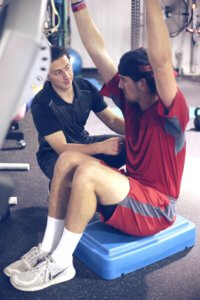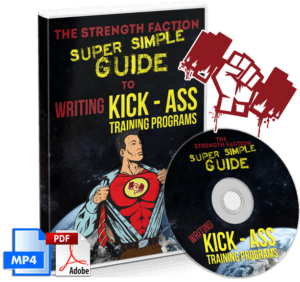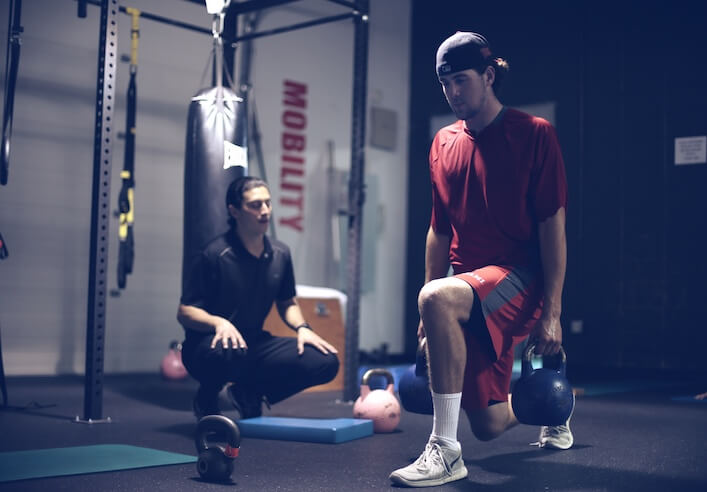Note from MR: Todd Bumgardner and Chris Merritt are two guys I truly respect in our industry.
Not only are the life-long learners, but they’re also guys who simply “get” the training process.
In this article, Todd is going to give you some fantastic ideas on how to write better gen pop programs.
And while I typically talk about athletes and athletic development, almost everyone here has at least a handful of gen pop clients they coach and program for.
So if you train gen pop clients, take 5-10 minutes out of your day and give this a read.
Here’s Todd…
As a coach, training general population clients is an incredibly rewarding experience.
It’s an opportunity each day to prove to people that they can do more than they think they’re capable of—to open up new doors for folks and improve their quality of life.
The experience gets even richer as you improve as a coach and programmer—you help folks get better results and improve their outcomes.
So, while it might not seem as sexy as writing a four year, Bulgarian, ultra-peaking phase, writing great Gen Pop programs is a powerful way to have a huge impact.
Chris Merritt, Mike Connelly, and I (the Strength Faction head coaches) have had the opportunity to write thousands of Gen Pop programs over the years, here are five pieces of advice we’ve accumulated through our experience.
#1 – Listen to Your Clients
So this might seem obvious, but we, as coaches, aren’t the ones that actually have to do the programs that we write.
I know—earth shattering.
 Problem is we often disregard client input, saddling ourselves atop a horse called We Know Better. While we are the experts, clients have context on themselves that no one else can understand.
Problem is we often disregard client input, saddling ourselves atop a horse called We Know Better. While we are the experts, clients have context on themselves that no one else can understand.
We have to take their requests and input into account. By no means are we saying fold to every client’s whim and desire, but the conversation must be two ways—not a coach to client dictation.
So, how do we do that in a way other than walking up to our folks and saying, “Well, so-and-so, whatta ya think of that program? Pretty great, right?”
Well, a simple way is to add a feedback form on the back of your program. It just asks a few simple questions and offers room to write simple answers.
We ask our folks if they felt that they’ve accomplished their goals for this phase, and if they have any comments or concerns in relation to the first question. We also ask them if they have any special requests as they move on to their next training phase.
These simple questions give people a greater feeling of ownership over their training process. And if we’ve done a good enough job educating them, they know what feedback to give and which questions to ask. Compliance and effort improve. Results are reaped.
#2 – Be Like Peyton Manning
Peyton Manning’s rookie season in the NFL was 1998—I was 12 when he called his first professional cadence.
I watched the man play a lot of football games, and I can’t think of one that he didn’t audible. Most of time he’d come to the line, realize they were in a bad play, and call an audible.
He’d educate himself so he’d have a deep understanding of the defense he was facing each week and work with his offensive coordinator to develop a game plan.
Deep understanding allowed him to make a great guess, but he wasn’t so attached to his initial decision that it blinded him to the reality that it wasn’t always the best option. When things didn’t look right, and the defense gave him information different than what he was expecting, he changed the play.
We have to do the same thing with our programs. We have to be like Peyton and call an audible when necessary.
Our evaluation is like Peyton’s game prep and our program is the initial play call. Now, while we shouldn’t audible as frequently as Peyton did, we can’t be so attached our initial plan, that we won’t make a change when we need to.
Write your program, and have your plan, but be ready to swap exercises or change loading parameters if you’re getting information contrary to what you expected.
(P.S. Having a solid two-up/two-down progression and regression system makes audible calling much easier and more productive.)
#3 – Plan Seasons of Lifting
Unlike athletes, a lot of general pop folks don’t have a specific event or season to prepare for. They’re training to improve their quality of life…and maybe so that more folks want to see their naughty bits. (I guess that still really falls under quality of life.)
Being that there isn’t a sport to prep for, our gen pop folks usually fall into one of two camps: focus is lost and they go through the motions, or they get too focused on developing one quality. Reality is we need some focus while also developing multiple qualities to improve quality of life and maintain a resilient body.
So, we borrow an idea from Dan John and plan seasons of lifting—concurrently training all qualities while narrowing focus on one or two qualities at different times during the training year.
At Strength Faction, we spend the winter and early spring leaning out, we maintain and spend more time moving outside during the summer and early fall, and we spend the fall and early winter building strength and mass.
Seasons of lifting give us the means to train concurrently, maintaining fitness in multiple qualities, while focusing in on different goals throughout the year.
#4 – Use a PR and Go Home Week
PR and Go Home Weeks are about two things:
- Recovery, and
- Accomplishment.
(Full disclosure, we also took this idea from Dan John).
During week three of our monthly programs we drop volume and raise intensity. The goal is to set a program PR, not a lifetime PR, and then get out of the gym.
This set up allows folks to recover from the accumulated fatigue of weeks one and two before heading into a big volume hike on week four. It also gives them an opportunity to accomplish something big to accompany their daily victories.
These are the weeks that we see folks do things they weren’t sure they were capable of simply because we call it PR week. Not only do we see most of the program PRs during this week, it’s the week we see the most lifetime PRs.
The PR and Go Home week gives us a chance to help folks manage their training stress while also giving them the chance to kick ass.
#5 – Include More Low-Tension Movement
Programs mostly employ high-tension training means—be that tension mechanical or psychological, heavy lifting or heavy effort.
While we need this tension to elicit positive change and get results, it needs to be balanced—especially for real people.
Our gen pop folks are working real jobs, have real life concerns, and shoulder the cumulative burden of all of them. They need an opportunity to drop the tension out of the system while moving.
Most folks also need a bit of movement education, or re-education. Moving in low-tension environments, such as rolling, light crawling, and low-tension joint rotations, helps people gain a better understanding of where their body ends and space begins.
Adding in some low-tension moves between sets of high-tension lifts does gen pop folks a great service.
A General Conclusion
Gen pop training is a rewarding endeavor, especially when you learn the skills that consistently produce results.
Listen to your clients and be willing to call an audible.
 Use seasons of lifting to develop focus and resiliency, and build a PR and Go Home week into your plan while also making room for low-tension movement.
Use seasons of lifting to develop focus and resiliency, and build a PR and Go Home week into your plan while also making room for low-tension movement.
You’ll write better gen pop programs, help your clients achieve better outcomes, and have a bigger impact.
And if you want our complete system for designing Gen Pop programs, please check out our Super Simple Guide to Writing Kick-Ass Training Programs.
This will give you our step-by-step process to write great programs for your gen pop clients. And this week only, it’s on sale for $97 (versus the standard $149).

